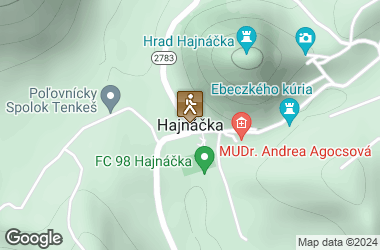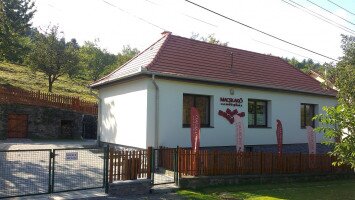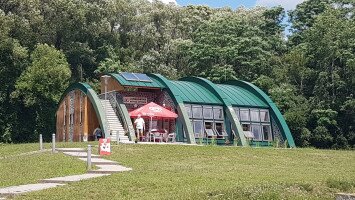09/01/2022 9:59 AM
A Bükk történelmi múltjának fontos emlékei a várak, vármaradványok. Nemcsak a jelentős falmaradványokkal rendelkező vagy majdnem ép kővárak, hanem a sáncokkal, árkokkal határolt "földvárak" is. Korábban kevesen tulajdonítottak védelmi jelleget a sáncoknak, töltésgyűrűkkel övezett építményeknek, azokat sok esetben "pogány" áldozóhelyeknek vélték és a hunoknak, avaroknak tulajdonították létrehozásukat. A közelmúltban lezajlott kutatások azonban tisztázták a "földvárak" korát, rendeltetését - ma már az őskori és középkori sáncvárak nagy részét is el tudjuk különíteni egymástól. A Bükk-vidéken, a Kárpát-medence más tájaihoz hasonlóan, az őskorban több népcsoport épített erődített telepeket, várakat. Az őskori erődítések első klasszikus korszaka a korai és középső bronzkor volt. A kora bronzkori hatvani kultúra (Kr. e. 2000 - 1750) és a középső bronzkori füzesabonyi kultúra (ie. 1750 - 1350) lakossága leginkább a hegység peremén, a dombvidéken telepedett le. A rájuk jellemző típus a nagyobb kiterjedésű "nyílt telep" melletti kis vár (0,02-0,08 ha). A többnyire csak árokkal körülvett védett terület a vezető rétegé lehetett: valószínűen egyaránt szolgálta a saját népüktől való elkülönülést, illetve a szomszédos népek, távolabbi kultúrák ellenséges népei elleni védelmet. A bronzkor első feléből származó földvárak a Bükk déli peremén a maklári Baglyas, a novaji Földvár, a tardi Tatár-domb. Az őskori erődített telepek második nagy korszaka a késő bronzkorban kezdődött. A Kyjatice-kultúra (Kr.e. 12. századtól 8-7. századig, a "preszkíták" betöréséig) sánccal, árokkal, meredek hegyoldalakkal határolt telepei nagy kiterjedésűek és igazán impozáns megjelenésűek és főleg a hegység belsejében, nagy relatív magasságú hegytetőkön lelhetők fel. A Bükk kyjatice-i típusú földvárcsoportjának minden egyes tagját érdemes felkeresni, a háromezer éves erődített települések bejárása önmagában is különleges élményt nyújt, sáncaikról pedig szép kilátás tárul szemünk elé. A hegység késő bronzkori erődített telepei a következők: Szilvásvárad és Bélapátfalva határán a Kelemen széke (Töröksánc), Dédestapolcsány határában a Verepce-tető, a Miskolctapolca mellett a Vár-hegy, Bükkszentlászló felett a Nagysánc, Sálytól északra a Latorvár-tető, Cserépfalu határában a Mész-tető, Felsőtárkány fölött a Vár-hegy. Mivel a bükki sáncok építését a Kr. e. 8. század idejére (a Hallstatt B2 periódus végére, a Hallstatt B3periódusra) datálják a régészek, ezért legújabban a preszkíta (mezőcsáti csoport) bevándorlási hullámokhoz kötik az erődítések elkészítését. Csakhogy ennek a vélekedésnek is ellentmond, hogy földvárainkban a keleti eredetű tárgyak is nagy számban jelen vannak, ami itt is a békés kereskedelmet valószínűsíti. Sőt a kiétei lakosság hegyekben történő továbbélése még akkor is jól dokumentálható, amikor a síkvidéket a mezőcsáti kultúra népe birtokolta. A kiéteiek és a preszkíták békés viszonyát mutatják a Szabó János Győző által a Tarna völgyében (Sirok - Akasztómály: nem messze a szajlai kiétei temetőtől) feltárt mezőcsáti típusú sírok, valamint a szilvásváradi Töröksánctól északnyugatra (az Eger felől Szilvásváradra bevezető műút és vasút kereszteződése mellett) Párducz Mihály által szkíta korinak meghatározott (Ha C periódusra datált), de inkább preszkíta temetőrészlet is. A késő bronzkori erődített telepek, várak jellegzetességeinek legjobb összefoglalását Nováki Gyula adta: "Valamennyi nagy relatív magasságú és nagy kiterjedésű hegy tetején fekszik. A sánccal, árokkal vagy hegyperemmel körülhatárolt telepek mérete az előzőkének a sokszorosa. Hosszuk 400 és 2000 méter, területük pedig a "kisebbeknél" 1,33 - 16,9 ha között változik, Szilvásvárad - Töröksánc azonban már 71,6 ha, Dédestapolcsány Verepce-tető pedig 123 ha területet foglal magába. A korai és középső bronzkorral szemben a késő bronzkorban igen nagy kiterjedésű telepeket találunk, mégis mindig osztatlanok. Nem találunk azokon belül elkülönülő részt, amit esetleg a vezetőréteg lakóhelyének tekinthetnénk. A telepek belsejében eddig végzett ásatások az óriási területekhez képest elenyészőek, ezért kellően alátámasztott következtetésekre nincs lehetőség. A többi kutatóval összhangban, mindössze annyit tételezhetünk fel, hogy a magas fekvésű, erődített telepek lakói között lehetett a vezetőréteg is, amely a környék kisebb települései felett is uralkodott. E nagy várak azonban nemcsak az ott élők, hanem az egész környék lakóinak a védelmét is szolgálták szükség esetén, igazi nagy népvárak voltak. Földváraink egymástól alig pár kilométerre, a Bükk hegység peremét szinte körülveszik. Az eddigi megállapítások szerint egy kultúrán belül, azonos időben lakták valamennyit. Ilyen közelségben nyilván szövetségesei voltak egymásnak. Úgy tűnik tehát, hogy a szomszédaikkal békés viszonyt ápoló, egymással szövetségben lévő kiétei csoportok nagy relatív magasságban és nehezen megközelíthető helyeken fekvő sáncvárainak rendeltetésével kapcsolatban nemcsak a hadászati védekezést, de az egyéb stratégiai szempontokat (kereskedelmi utak ellenőrzése, birtokközpont) is kizárhatjuk! Cserépfalutól észak-északkeletre kb. 2 km-re emelkedő Mész-tető a Bükkaljához tartozik, de közel van a Déli-Bükkhöz, a Hór-patak völgymedencéjéhez. Az itt található földvárat a késő bronzkorban (ie. 1100-800) építettek, ahogy már írtuk, a hegyvidék peremén épült várláncolat (bükkaranyosi földvár, kisgyőri Hársas és Majorvár, sályi Latorvár stb.) tagjának tekinthető. A földvár a dombtető északnyugat felé kinyúló platóját foglalja el. Északkeleti, legmagasabban lévő szélét keskeny, meredek oldalú, sziklás gerinc határolja. A délnyugat felé lejtő szélén az erődítés vonala bizonytalan. A délkelet felé folytatódó lankás hegyoldal felől jól kivehető egyenes sánc védte a telepet. A sáncon és körülötte Korek József 1960-ban végzett rövid ásatást, amely során a sánc külső (keleti) aljában keskeny V alakú árok bontakozott ki. Az előkerült kerámia leletek alapján a késő bronzkorba és a kora vaskorba datálták a telep korát. A sánccal védett terület háromszög alakú, nyugati és keleti oldala természetes meredély, déli oldalát markáns sánc határolja. A délkelet felé folytatódó lankás hegyoldal felől mára már erősen lepusztult egyenes sánc védte a telepet. A 230 m hosszú, 10-15 m széles, jelenleg 1-1,5 m magas sánc által lezárt tér közepe erősen bemélyed, amfiteátrumszerű. Az erődítést a régészeti kutatás a Kyjatice kultúrába sorolja az előkerült cseréptöredékek alapján. A késő bronzkori – kora vaskori megtelepedés nyomai a sáncon kívül, a lankás hegyoldalban is megtalálhatók.
Read more

















